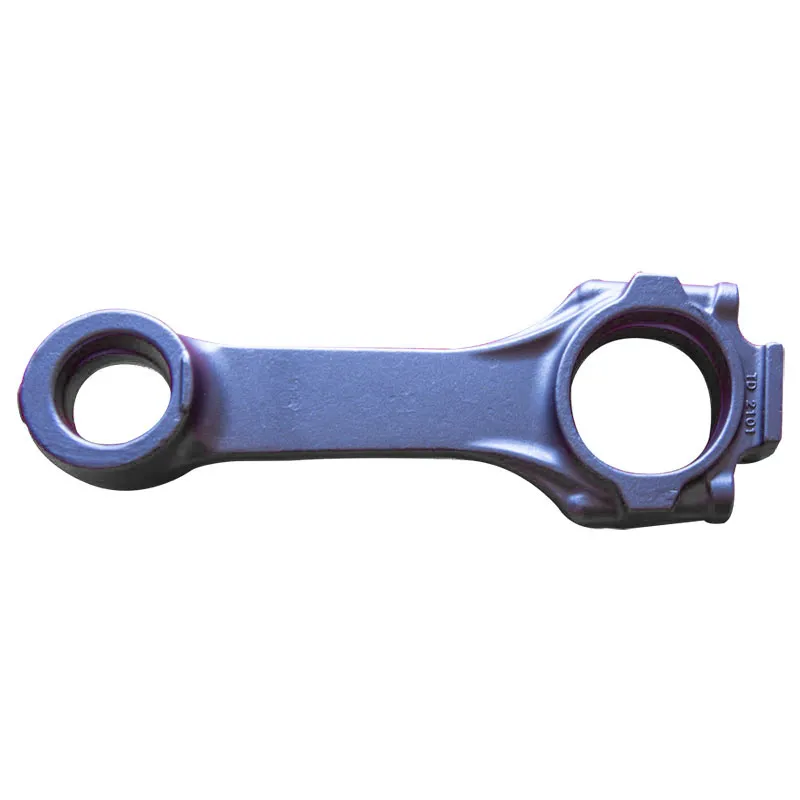Characteristics of Connecting Rod Blank
2024-07-28
A connecting rod blank is a preliminary form of a connecting rod used in engines, created before it undergoes further machining and finishing processes. The connecting rod itself is a crucial component in internal combustion engines, linking the piston to the crankshaft and converting the piston's reciprocating motion into rotational motion. Here are the key characteristics of a connecting rod blank:
1. Material
- Base Material: Typically made from high-strength materials such as forged steel, aluminum alloys, or titanium, depending on the application and performance requirements.
- Forging: Often produced through forging processes to enhance material strength and durability, reducing the risk of fatigue and failure.
2. Shape and Size
- Preliminary Shape: Has a rough, preliminary shape that will be further machined to the final dimensions. It usually resembles the basic geometry of the finished connecting rod but lacks final details and precision.
- Dimensions: Includes the basic dimensions required for the final connecting rod, including the length between the piston end and crankshaft end, and the diameter of the bolt holes and bushings.
3. Design Features
- End Features: The connecting rod blank will have rough features for the piston end (small end) and crankshaft end (big end), including initial holes or fittings for bolts and bearings.
- Web and I-Beam Designs: May have an I-beam or H-beam cross-sectional design to balance strength and weight. The choice of design influences the rod's performance and durability.
4. Surface Finish
- Rough Surface: Typically has a rough surface finish from the initial forging or casting process. The surface will undergo further machining, grinding, and polishing in later stages.
- Heat Treatment: Often subjected to heat treatment processes to improve hardness and strength before final machining.
5. Tolerances and Specifications
- Dimensional Tolerances: Produced to meet initial dimensional tolerances that will be refined during the machining process. Accuracy in these tolerances is essential for the final connecting rod's performance.
- Engineering Specifications: Designed to meet specific engineering specifications related to strength, weight, and thermal performance based on its intended application.
6. Machining Requirements
- Further Machining: Requires additional machining processes such as turning, milling, drilling, and honing to achieve the final dimensions, surface finish, and geometric details.
- Balancing: May need to be balanced during or after machining to ensure proper engine performance and longevity.
7. Application
- Engine Components: Used in internal combustion engines for various applications, including automotive, aerospace, and industrial engines. The choice of material and design depends on the engine's performance requirements and operating conditions.
- Performance Considerations: In high-performance applications, the connecting rod blank will be designed to withstand high stresses and temperatures.
8. Quality Control
- Inspection: Subjected to rigorous quality control and inspection processes to ensure that it meets the required specifications and is free from defects.
- Testing: May undergo testing for material properties, dimensional accuracy, and strength before final machining.
9. Manufacturing Processes
- Forging and Casting: Commonly produced using forging or casting methods to create the initial blank. Forging is preferred for its ability to produce stronger, more uniform material properties.
- Heat Treatment: Heat-treated to enhance material strength and fatigue resistance before final machining.
10. Cost and Value
- Cost Factors: The cost of a connecting rod blank depends on factors such as material, manufacturing processes, and required precision. High-performance or specialized blanks will typically be more expensive.
- Value: Investing in high-quality connecting rod blanks ensures reliable engine performance and longevity, making it a critical component for high-performance and precision-engineered engines.
Summary
A connecting rod blank is an initial form of the connecting rod used in engines, made from high-strength materials and designed for further machining to achieve precise dimensions and performance characteristics. It features a rough shape, preliminary design, and is subjected to heat treatment and quality control processes. The blank's final application and performance are influenced by its material, design, and manufacturing processes, making it a crucial component in the engine assembly.



